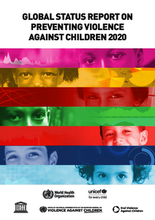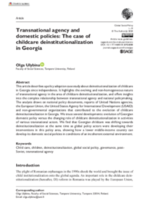Displaying 131 - 140 of 1732
This paper argues that whilst statutory services have expanded then contracted, children’s charities have remerged as the most influential voices that have shaped twenty-first century child protection policy and practice in the UK.
This study explores how male unaccompanied migrant children’s interactions with child protection staff in Greece shape their future trajectories as migrants.
In this article, the authors propose a definition of child well-being that draws on the economic literature pertaining to skill formation and human capital.
In this article, the authors outline some of the issues in the implementation and understanding of the Convention and highlight three major international developments over the last decade: the adoption of General Comment No 13, the work of the Special Representative of the Secretary General on Violence Against Children, and the adoption of the 2030 Agenda for Sustainable Development by the UN General Assembly in 2005.
This care system assessment is intended to support the Government of Kenya to assess and strengthen the national, formal care system.
The Global status report on preventing violence against children 2020 charts countries’ progress towards the SDGs aimed at ending violence against children.
The purpose of this study was to examine whether eliminating variation in information presented to multi-disciplinary teams eliminates variation in the proportion accepted for a child protection alert.
This paper explores the efficacy of the United Nations Convention on the Rights of the Child (Convention, UN General Assembly, 1989) through the lens of the over-representation of First Nations children placed in out-of-home care in Canada and Aboriginal and Torres Strait Islander children in Australia.
This article describes a policy adoption case study about deinstitutionalization of childcare in Georgia since independence. It highlights the evolving and non-homogeneous nature of transnational agency in the area of childcare deinstitutionalization, and offers insights into the complex relationship between transnational agency and national policymaking.
The Children’s Commissioner of New Zealand undertook a thematic review of the policies, processes and practices of Oranga Tamariki Ministry for Children relating to care and protection issues for pēpi Māori (Māori infants) aged 0-3 months. This first report presents the insights gained from interviews with mums and whānau (family) who had experience with pēpi (aged 0-3 months) who had either been removed, or were at risk of being removed, from their whānau by Oranga Tamariki or its predecessor Child, Youth and Family.




